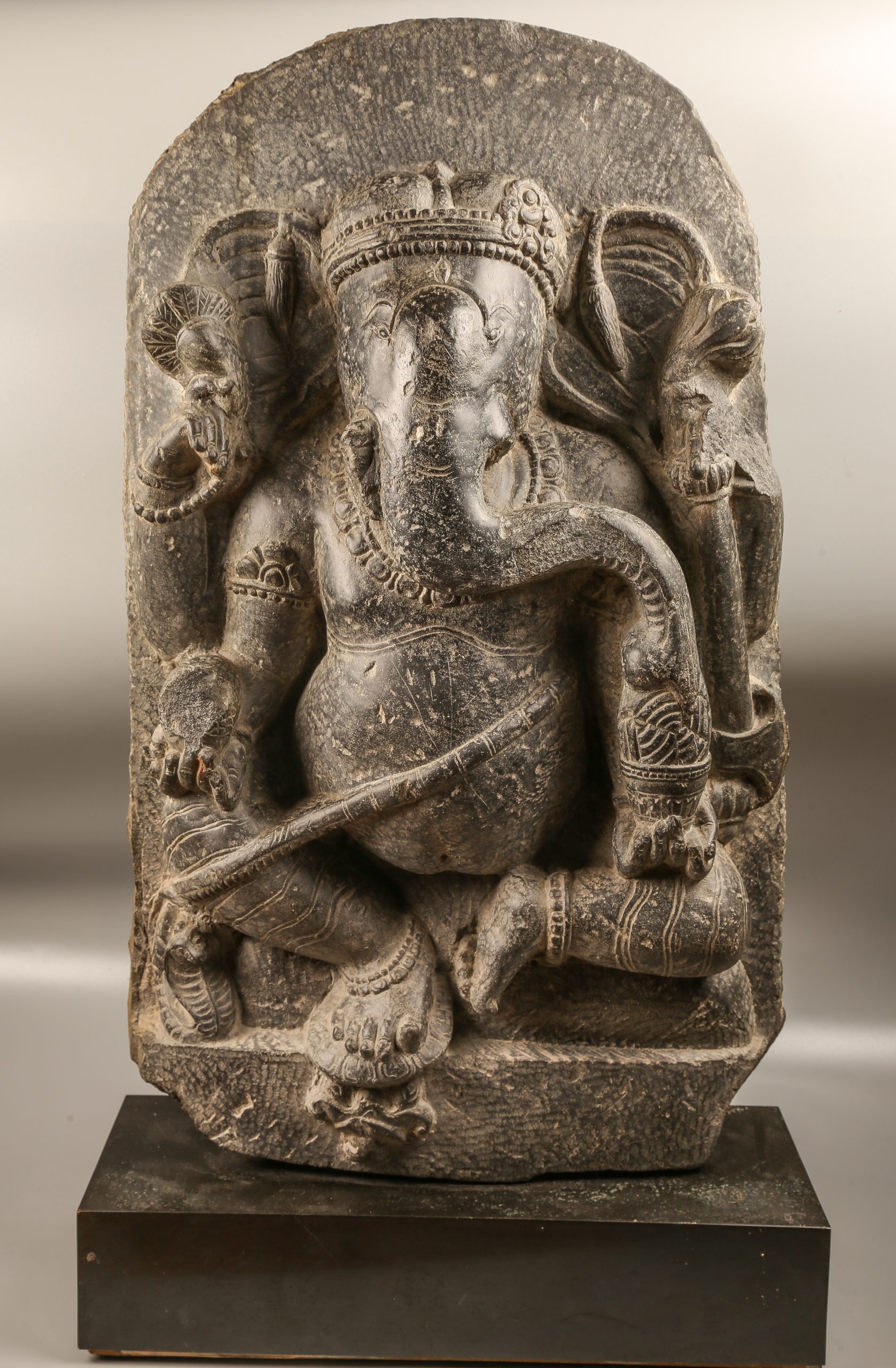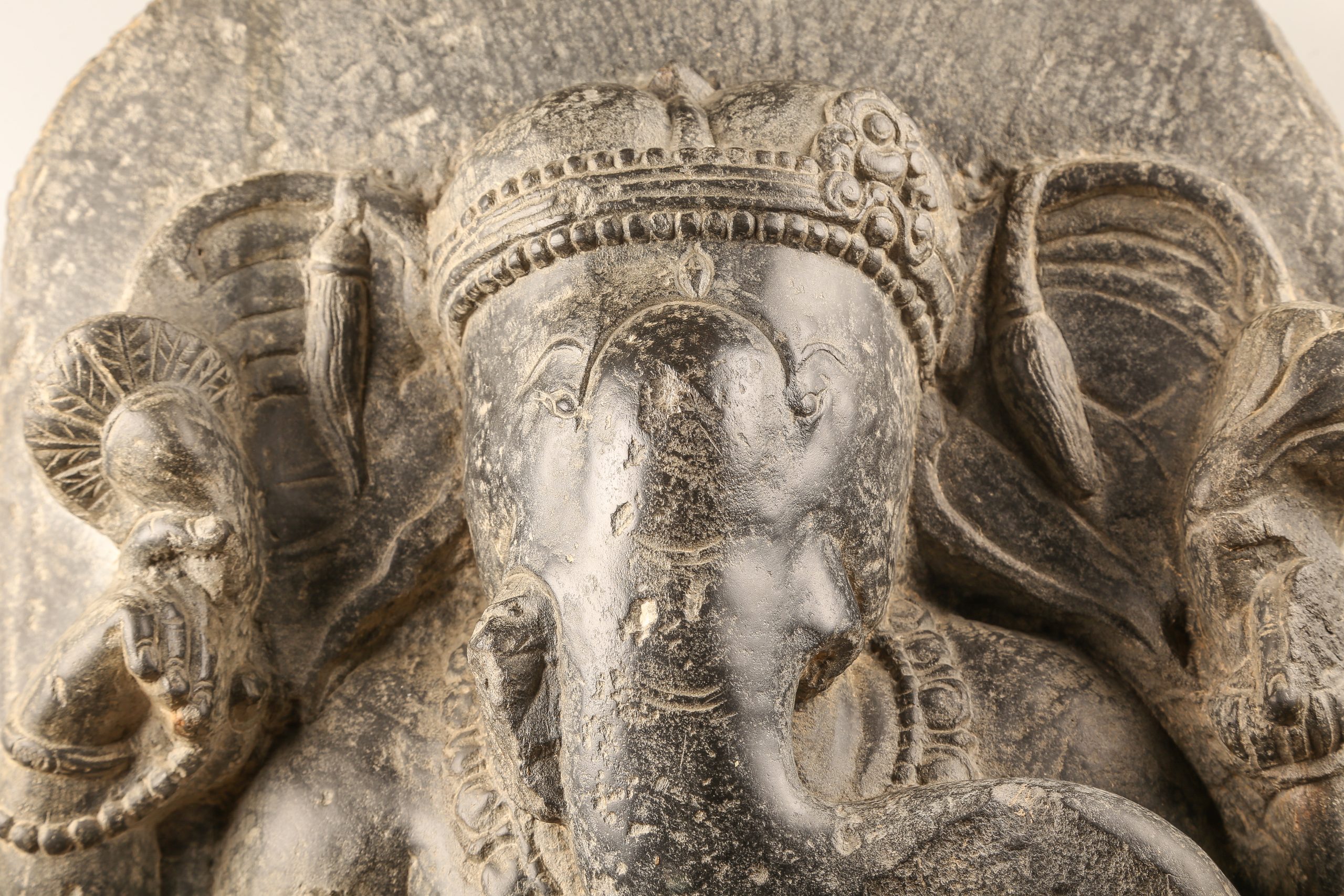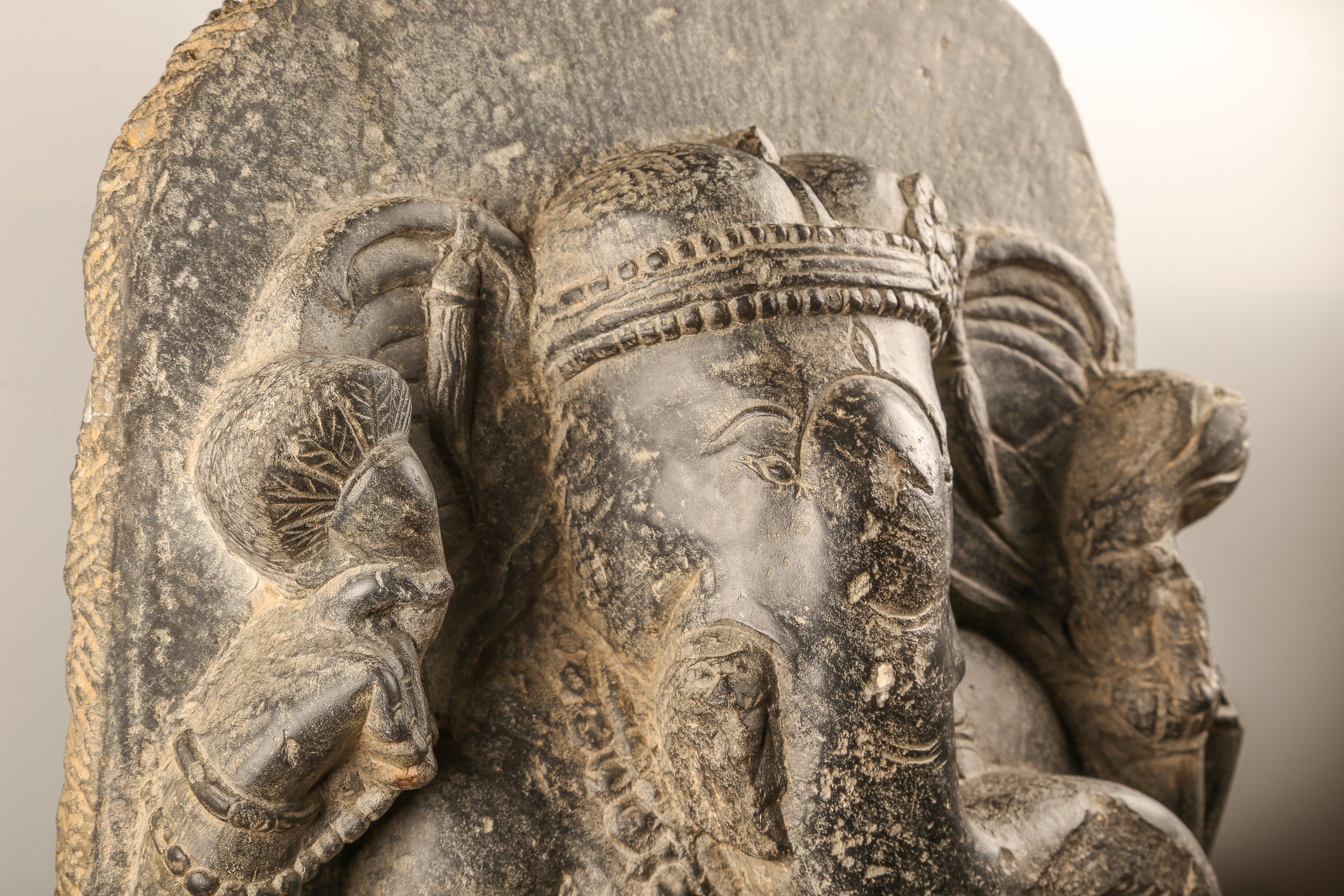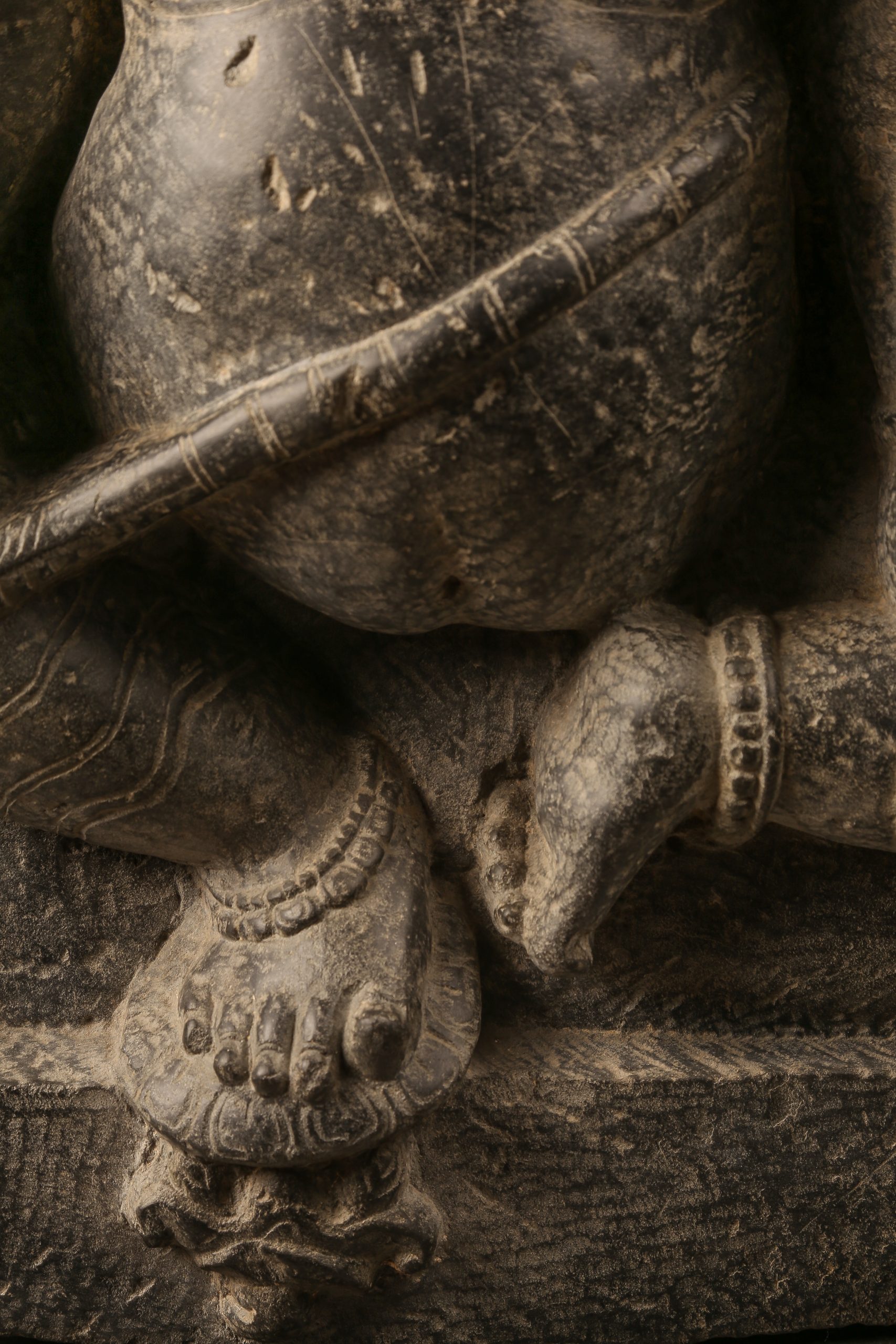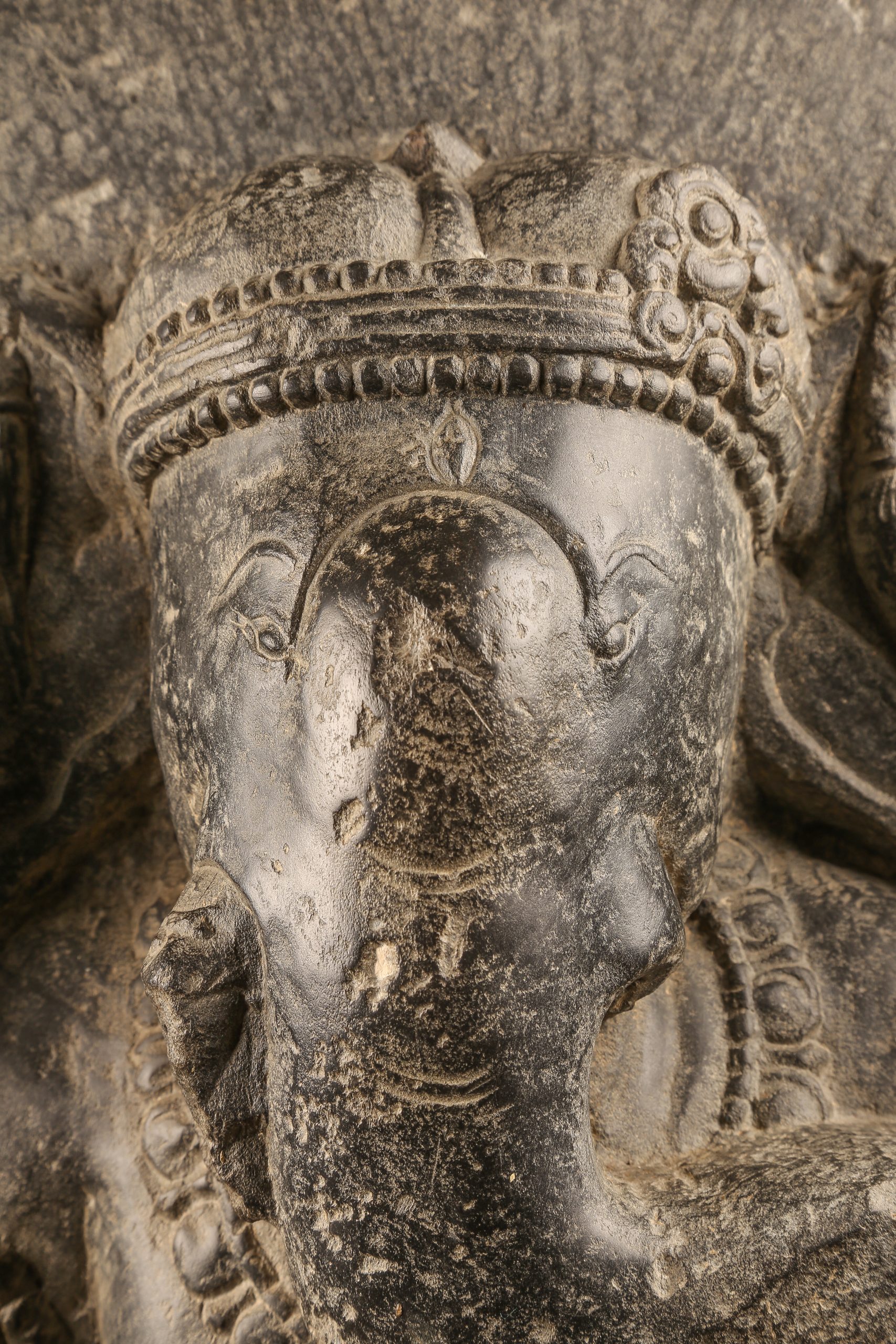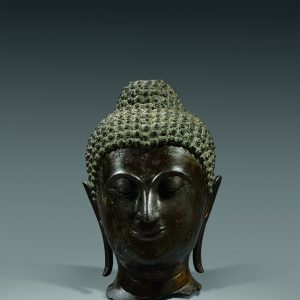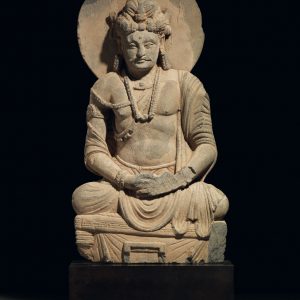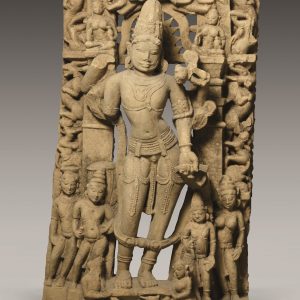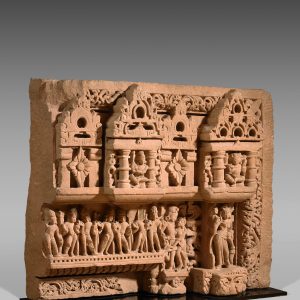Stele of Ganesha
Black stone
Northern India
10th-11th century, Pala period
H. 75 cm
Description
Gaṇeśa, a particularly venerated god
This fragment of decoration, carved in high relief, depicts Gaṇeśa seated in latitasana on a cushion, his right tusk broken, his narrow-eyed face framed by his large ears, his trunk dipping into a modaka bowl that he carries in one of his left hands. In his other hands he holds an axe, paraśu, which is also one of Śiva’s attributes, consistently present on his representations. He also holds the Mâlâ and other Buddhist attributes. His body is adorned with jewels and his forehead is girded with an elaborate tiara.Son of Śiva and Pārvatī, this elephant-headed god enjoys great popular fervor, and he is worshipped in the various streams of Hinduism. He is the one who removes obstacles, and contributes to the prosperity of any enterprise. As a greedy god, his devotees honor him with offerings, especially sweets, which are placed at the foot of the god’s statues.
The purity of the forms in the service of the dynamism of the composition
Under the Pala dynasty, whose rulers were mostly Buddhist, religious diversity was nevertheless encouraged. Pala art emerged on the model of the Gupta idiom, which had a great posterity in India, and which also spread to China, Japan and Korea. These canons are thus reused to create a full-fledged part of the Pala period. Here, the sobriety of the forms, the elegance of the movement, are particularly admirable and make this Gaṇeśa a very fine example of Pala art. To the refinement of the details and ornaments of the god are mixed energyand elegance. To the refinement of the details and ornaments of the god are mixed energy and elegance. The richness of the sculpted details To this purity of the body’s forms is added the decorative treatment of the ornaments, in particular the tiara on the god’s head, as well as the necklaces around his neck and the bracelets on his arms.
The richness of the sculpted details
To this purity of the body’s forms is added the decorative treatment of the ornaments, in particular the tiara on the god’s head, as well as the necklaces around his neck and the bracelets on his arms. His clothing, almost imperceptible, translates this desire of Indian artists to create luminous images, according to a religious prerequisite evoked in the texts.
Provenance : Jean-Claude Moreau-Gobard collection, Paris, 4 November 1997

